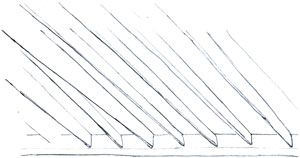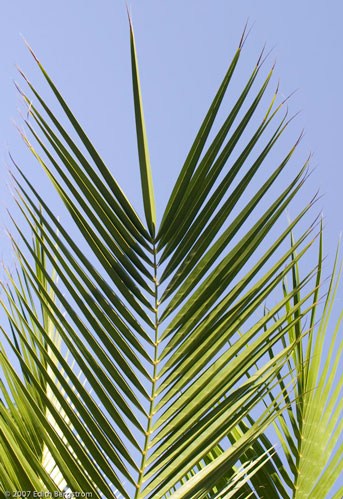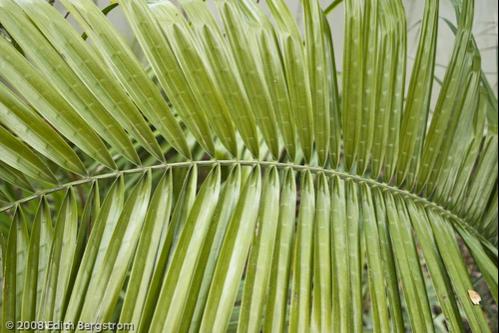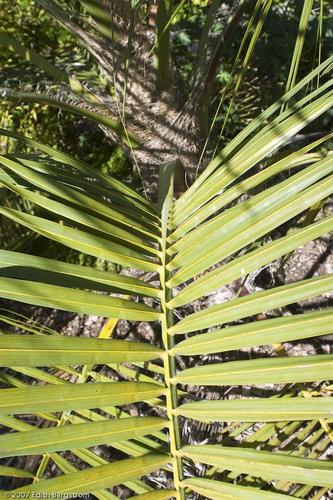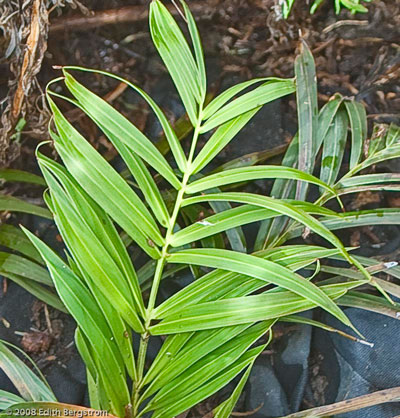Leaf Group 1: Types A. B. & C.
Type A. Uniform Leaf Angle - Single Rank
Characteristics
- Angles of Leaf attachment are fairly uniform to the rachis.
- Leaves are opposite each other on the rachis (like professional soldiers marching along, botanically known as single rank).
- Tip of rachis ends in one terminal leaf.
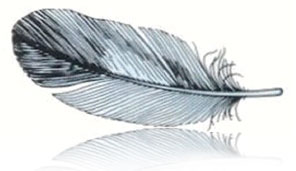

One terminal spear
Similar Genera: Archontophoenix (King Palm); Phoenix canariensis; Ravenea rivularis
Type B. Uniform Leaf Angle - Two Ranks
Characteristics
- Two ranks means leaves are on the whole not opposite each other, but offset. Think of two ranks of soldiers.
- The leaf attachment angle in some species is not entirely regular (like new recruits trying to line up).
- Rachis ends in one terminal leaf.
Similar genera: Arenga; Butia genus; Butia X Parajubaea; Ceroxylon quindiuense; Jubaea chilensis; Jubaeopsis caffra; Parajubaea; Rhopalostylis genus; Wallichia
Type C. Uniform Leaf Angle - Leaves Clustered
Characteristics
- The main difference here is that the leaves are attached in groups. Think of small platoons of soldiers manufacturing chlorophyll.
- Leaf attachment is not entirely regular in angle and rank.
- Rachis ends in one terminal leaf.
Similar genera: Allagoptera leucocalyx. Mature plants will look more plumose. See leaf Group 2, Type B.
